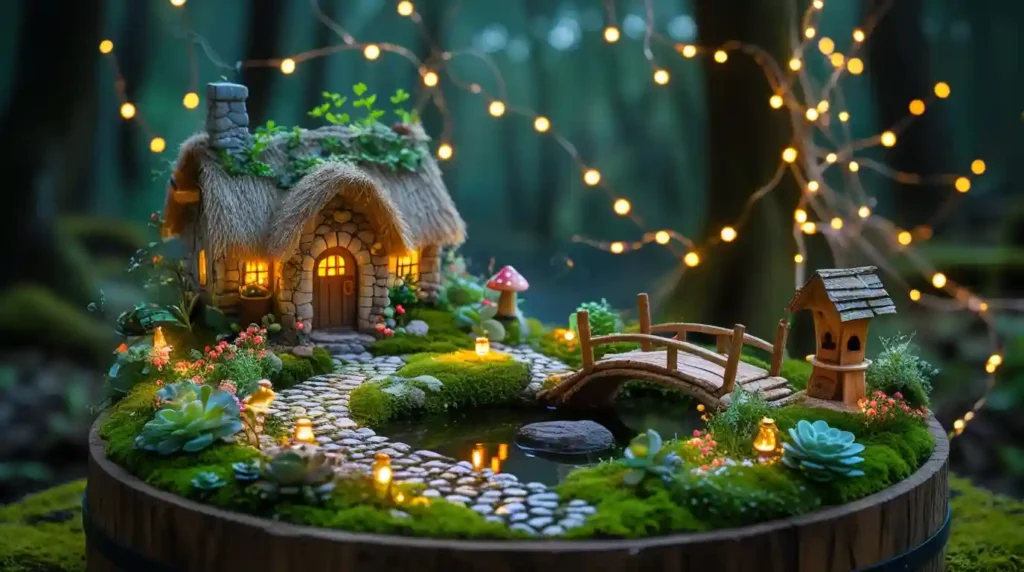The Fairy garden has captured the hearts of nature-lovers and imaginative souls of all kinds. The beautiful miniature landscapes add an element of magic to any area, allowing the user to design a miniature world that is full of beauty and imagination. No matter if you have a small garden, a huge backyard, or an indoor space that is cozy A fairy garden can transform your area into a charming getaway.
What exactly is a fairy-garden? How do you design one that truly feels magical? We’ll look at all you must learn regarding fairy-gardens, starting from their roots and the essential elements to step-by step instructions for building your own.
What is a Fairy Garden?
The fairy gardens are miniature settings created with miniature plants, figurines and other decorative elements that resemble the magical world in which fairies may reside. Small-scale gardens can be designed in pots, flower beds, or even recycled containers.
The appeal of fairy gardens is in their imagination. Each garden is unique and reflects the individual style and vision of the person who created it. Some are quaint cottages with flowing paths, and elegant bridges. Others have a natural, woodland-like appearance, with moss and stones, and other rustic elements.
The Fascinating History of Fairy Gardens
Fairy gardens might seem like an era-old trend however their roots go to centuries ago. The belief in fairy tales along with their connection to nature have long been part of folklore across many societies, with a particular focus in Europe.
In the 19th century, the interest in miniature gardens increased, especially in Japan which is where bonsai and tray gardens became well-known. The concept then was introduced to the West which eventually transformed into fairy gardens like they are in the present. In the 20th century small, magical landscapes were a popular element of gardening, encouraging people to create enchanting stories in their homes.
Why Create a Fairy Garden?
There are several reasons why fairy gardens have become a beloved hobby for many:
- Creativity and Imagination – Designing a fairy garden allows you to unleash your creativity and craft a world that feels magical and unique.
- Relaxation and Stress Relief – Gardening, even on a miniature scale, is a therapeutic activity that helps reduce stress and improve well-being.
- Family-Friendly Activity – Fairy gardening is an excellent project for families, encouraging kids to connect with nature and use their imagination.
- Enhancing Home and Garden Aesthetics – These tiny landscapes add charm and whimsy to any space, indoors or outdoors.
- Encouraging Sustainability – Many fairy gardens incorporate upcycled materials and natural elements, making them an eco-friendly project.
Essential Elements of a Fairy Garden
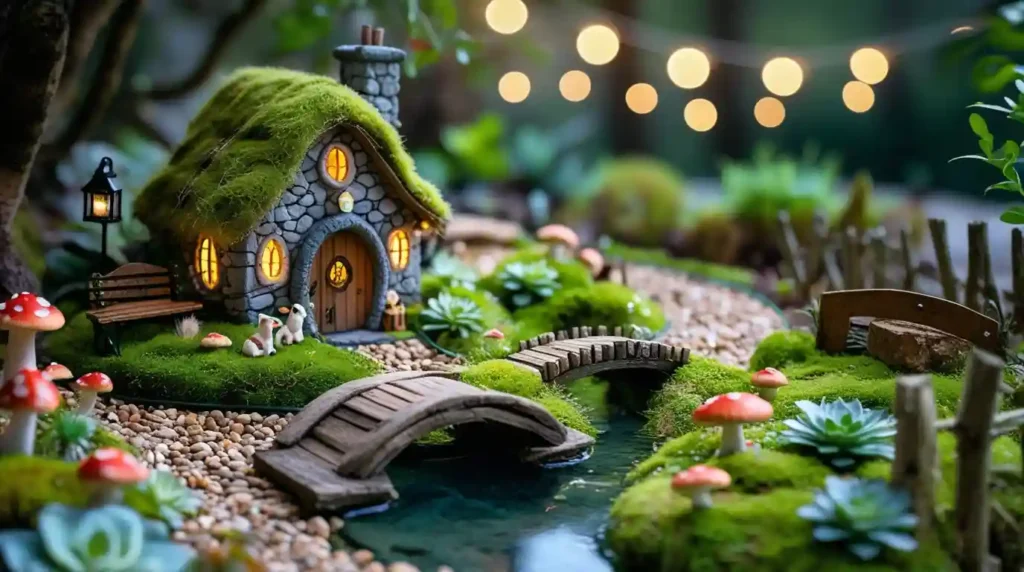
For an enchanting fairy garden You’ll require some essential elements. Although there aren’t any strict guidelines, these elements will allow you to bring your fantasy reality to life.
1. A Suitable Container or Space
The fairy gardens can be constructed in any location from traditional garden beds to tiny containers, wooden crates or even recycled birdbaths. Select a place that is suitable to your preferences and the space available.
2. Miniature Plants
The right plants will enhance the natural beauty of your fairy garden. Some great choices include:
- Moss – Adds a soft, natural look.
- Succulents – Require minimal maintenance and offer unique textures.
- Miniature Ferns – Create a lush, forest-like feel.
- Creeping Thyme – Acts as a beautiful ground cover.
3. Decorative Elements
Adding tiny structures and accessories can bring your fairy garden to life. Consider including:
- Fairy houses or cottages – Small, rustic homes for your magical residents.
- Pathways and bridges – Use pebbles, tiny bricks, or wood slices.
- Miniature benches, swings, or lanterns – Create a cozy, inviting setting.
- Tiny ponds or waterfalls – Use small mirrors or blue glass to mimic water.
4. Natural Materials
Incorporating natural elements will make your fairy garden feel more organic and enchanting. Use twigs, acorns, pinecones, shells, and stones to add texture and depth.
5. Fairy Figurines
The fairy gardens aren’t complete without the magical creatures! Select tiny fairy models or mythical characters such as Elves, gnomes, or woodland animals to give the character to your garden.
Step-by-Step Guide to Creating a Fairy Garden
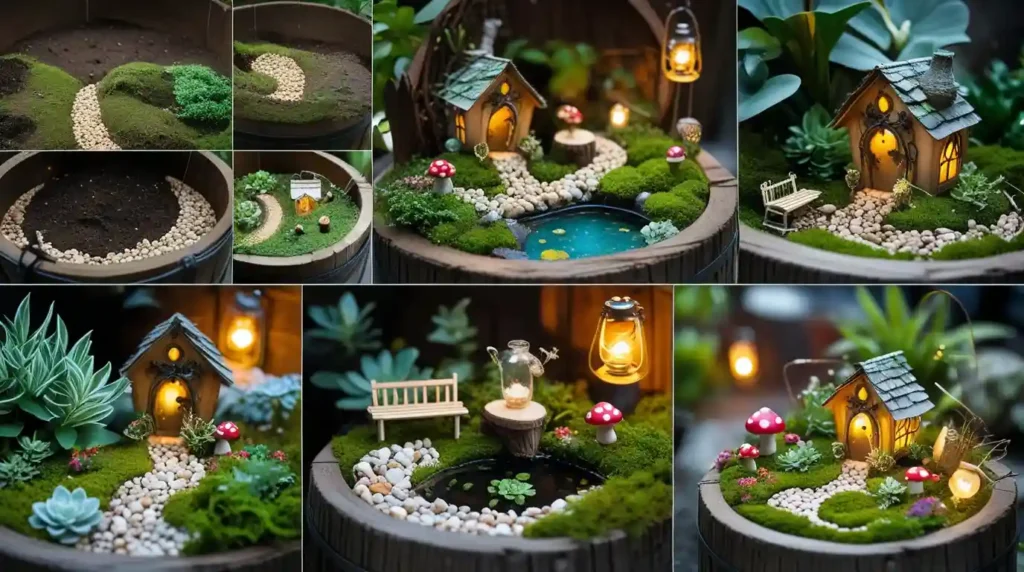
Now that you understand the basics, let’s walk through the process of building your own fairy garden.
Step 1: Choose a Location
Choose the location you’d like to set up your garden fairy. If it’s outside, make sure it’s placed in a location with the proper amount of sun for the plant you’ve chosen. If you’re indoors then choose an appropriate container to the space you have.
Step 2: Prepare the Base
If you are using a container, place a layer of small pebbles for drainage. This is then add a layer of high-quality potting soil. If you are gardening outdoors, clean the space of debris and weeds prior to arranging your garden elements.
Step 3: Arrange the Plants
Start by putting the larger plants, like miniature ferns or succulents to create focal points. Then, fill in gaps using smaller plants and the moss, to create a natural landscape.
Step 4: Add Pathways and Structures
Make use of pebbles, bark or tiny bricks to make an avenue that leads to fairy houses and other buildings. Install fences or bridges strategically to create a magical experience.
Step 5: Decorate with Accessories
Include decorative objects such as lanterns, benches, and small furniture pieces to make your garden appear warm and inviting. Make sure to add small woodland creatures to make your garden come to life.
Step 6: Maintain Your Fairy Garden
Every now and then, water and trim the plants, clear debris and change decorations as required. If you place it outdoors, make sure to protect it from the harsh elements to keep it looking stunning all year round.
Tips for Designing a Unique Fairy Garden
To make your fairy garden truly special, consider these design tips:
- Choose a Theme – Create a woodland fairy retreat, a seaside fairy cove, or even a mystical moonlit garden.
- Incorporate Lighting – Tiny LED lights or glow-in-the-dark elements can make your fairy garden look magical at night.
- Use DIY Elements – Handmade fairy houses, tiny furniture made from natural materials, or painted stones can add a personal touch.
- Blend with Nature – Position your fairy garden near trees, flowers, or water features to enhance its natural appeal.
Indoor vs. Outdoor Fairy Gardens: Which One is Right for You?
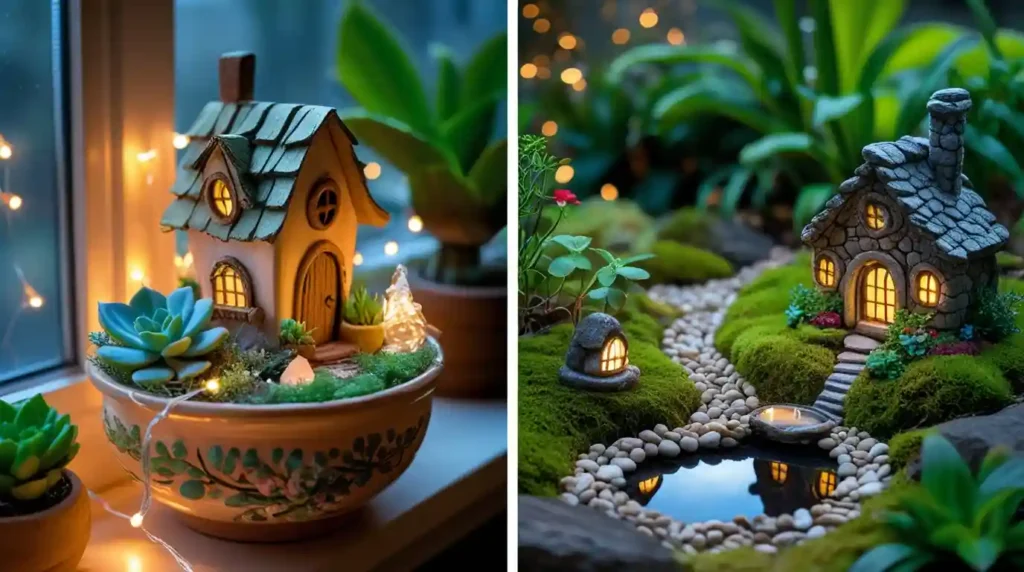
Fairy gardens can thrive both indoors and outdoors, but each setting has its advantages:
Indoor Fairy Gardens
- Perfect for small spaces and apartment dwellers.
- Easy to control temperature and lighting.
- Less exposure to weather-related damage.
Outdoor Fairy Gardens
- Allow for more natural elements and larger designs.
- Can blend seamlessly into an existing garden.
- Encourage local wildlife like butterflies and birds to visit.
Whether you choose an indoor or outdoor fairy garden, the key is to create a space that sparks joy and imagination.
Final Thoughts: Let Your Creativity Shine!
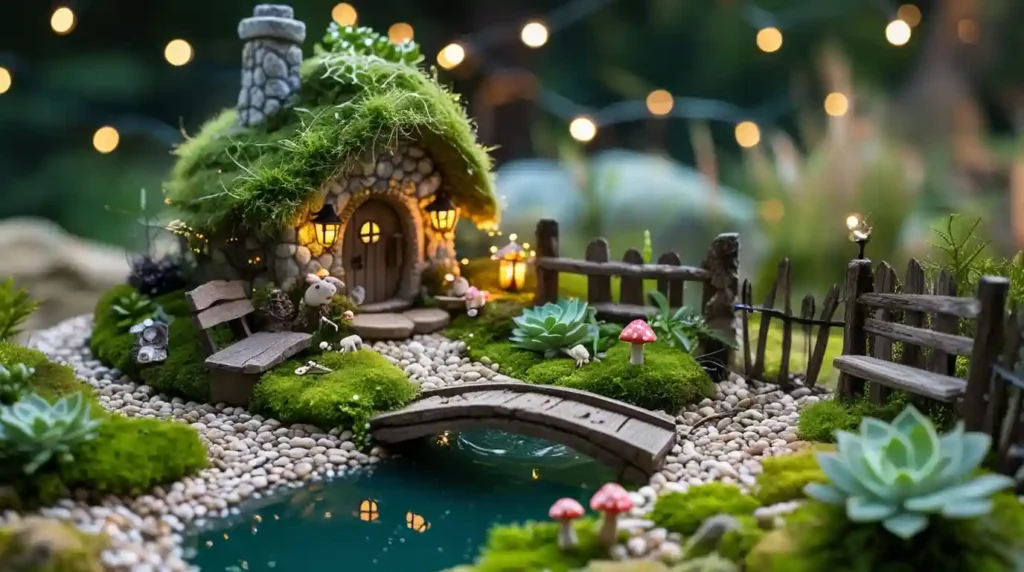
Fairy gardens aren’t simple decorative ideas. They are getaways to a world of imagination and creative thinking. If you’re planning to build one as a pastime or as a family-friendly activity or as a way to improve your home’s aesthetic The possibilities are endless.
With the appropriate plants, thoughtful decoration along with a dash of fun, you can make a fairy-garden that is truly magical. So, why not get started now? Let your imagination take flight and add a touch of fairy-tale magic into your lives!
